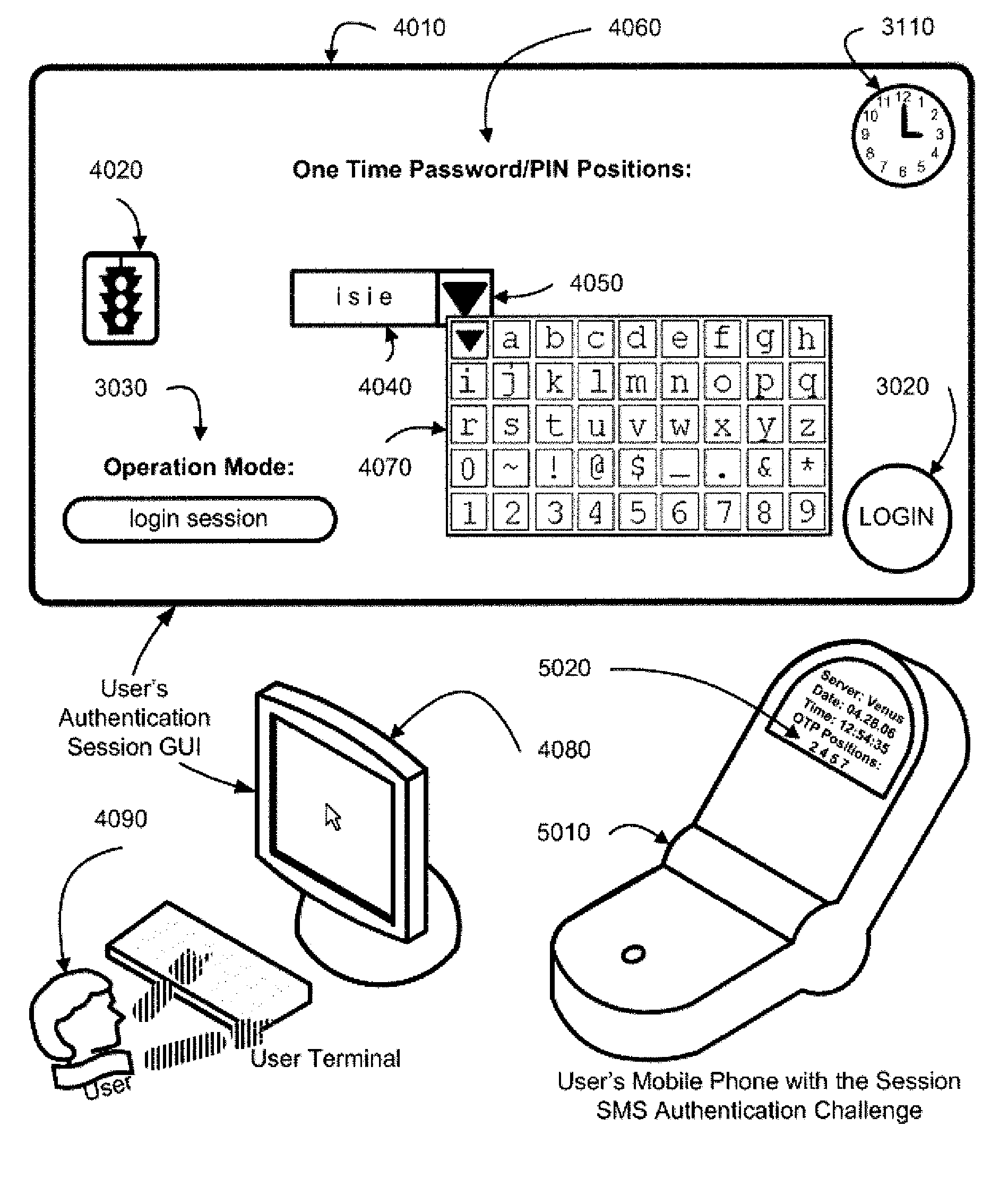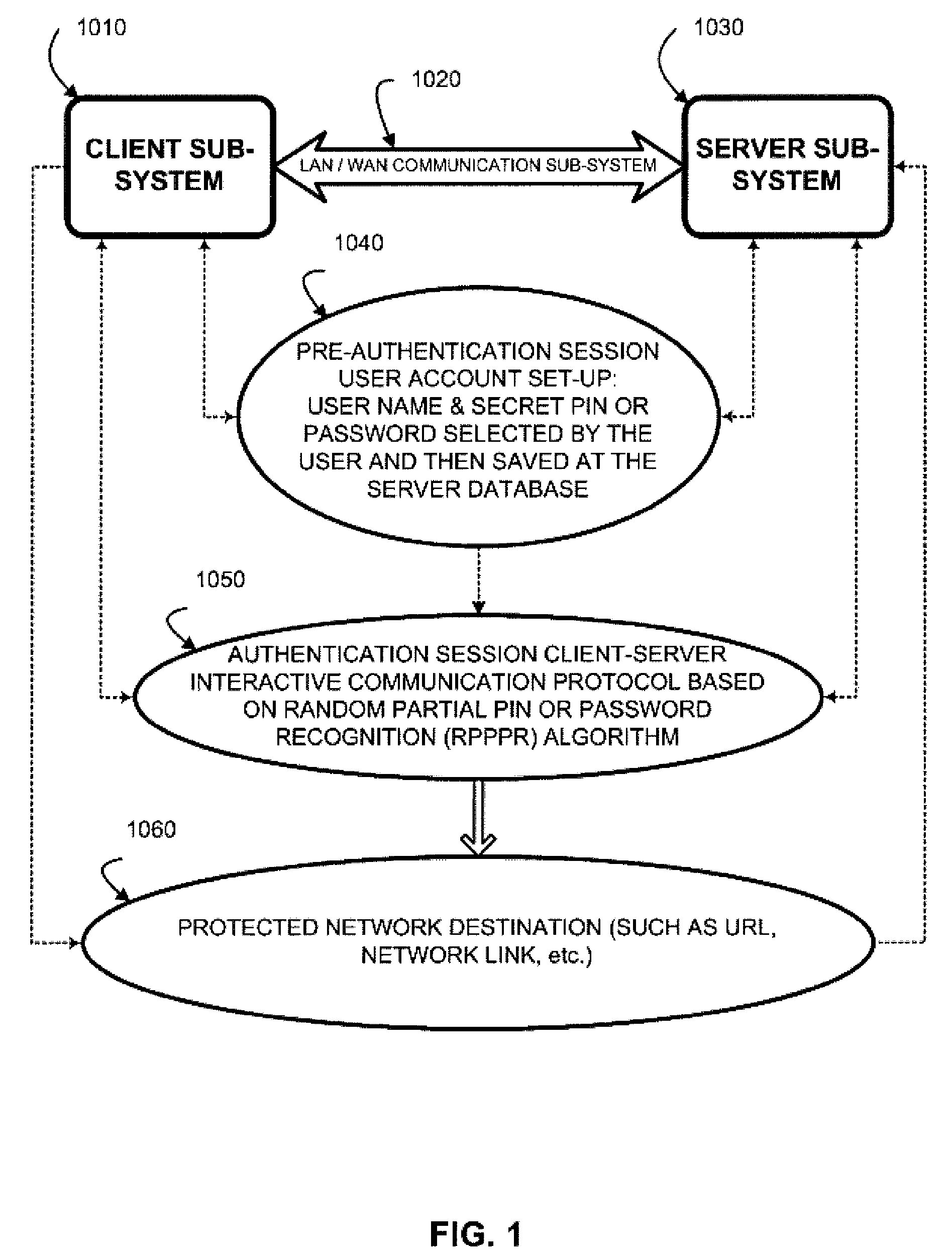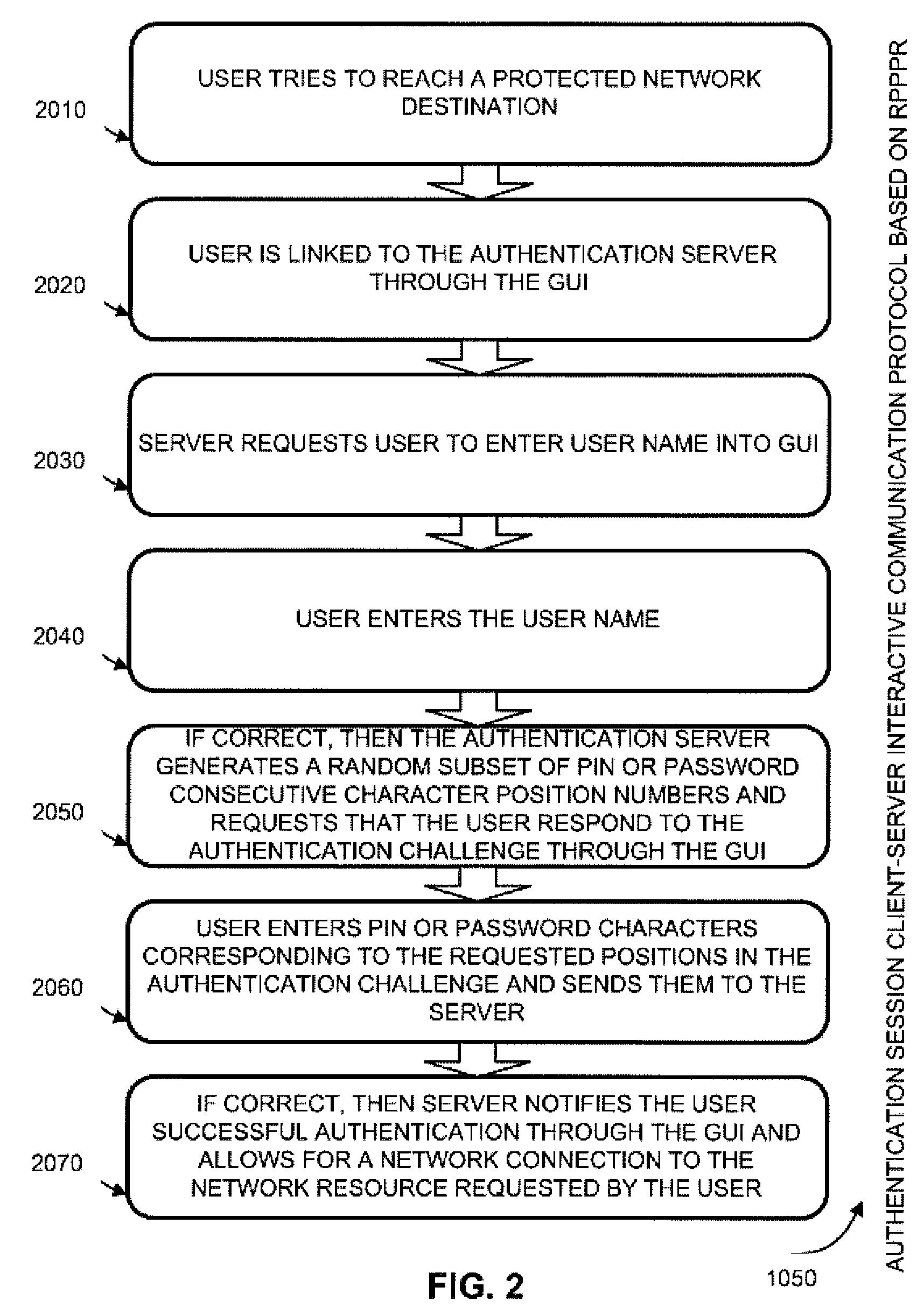Two-channel challenge-response authentication method in random partial shared secret recognition system
a technology of secret recognition and authentication method, applied in the field of user authentication system, can solve problems such as privacy and security concerns, significant financial losses in the financial industry, and loss of consumer trust in online transactions
- Summary
- Abstract
- Description
- Claims
- Application Information
AI Technical Summary
Benefits of technology
Problems solved by technology
Method used
Image
Examples
Embodiment Construction
[0091]A detailed description of the embodiments of the present invention is provided with reference to FIGS. 1 through 31.
Random Partial Shared Secret Recognition (RPSSR) System
[0092]Random Partial PIN or Password Recognition (RPPPR), Random Partial Digitized Path Recognition (RPDPR), and Random Partial Pattern Recognition (RPPR) algorithms or authentication factors described below represent various embodiments of a Random Partial Shared Secret Recognition (RPSSR) system. Despite the different nature of the client-server credentials in these algorithmically and parametrically different authentication factors, they all have a common ground. The server, having obtained from a client a user name or a user ID (or a host ID in the case of device to device authentication), presents an authentication challenge (a clue) to the client during each authentication session and requires client to enter a certain Random Partial Shared Secret (a session-specific subset of the shared secret) as an a...
PUM
 Login to View More
Login to View More Abstract
Description
Claims
Application Information
 Login to View More
Login to View More - R&D
- Intellectual Property
- Life Sciences
- Materials
- Tech Scout
- Unparalleled Data Quality
- Higher Quality Content
- 60% Fewer Hallucinations
Browse by: Latest US Patents, China's latest patents, Technical Efficacy Thesaurus, Application Domain, Technology Topic, Popular Technical Reports.
© 2025 PatSnap. All rights reserved.Legal|Privacy policy|Modern Slavery Act Transparency Statement|Sitemap|About US| Contact US: help@patsnap.com



